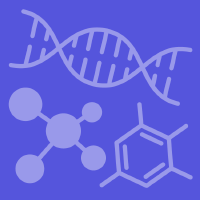Topic Menu
► Topic MenuTopic Editors

Frontier in Biocatalysis and Biotransformations
Topic Information
Dear Colleagues,
In recent years, many new biocatalysts have been described and studied mostly from a biocatalytic perspective. Since more and more (meta)genome data become available, even more of those studies will appear and add to our knowledge on novel reactions and enzymes. However, the transfer to application needs more attention and, thus, scale-up. Enzyme production and optimization in combination with product isolation also need more attention. Thus, this Topic aims to focus on this chain, including the identification of novel enzymes from bioprospecting activities, producing enzymes and increasing yields from various host organisms, engineering biocatalysts by means of site-directed mutagenesis or directed evolution, putting enzymes together—even with chemical synthesis—yielding novel chemoenzymatic cascades, product isolation after processing or in situ, and even combinatorial approaches towards new products. All this needs research in the field of biocatalysis and biotransformation to bring us to new frontiers.
Asst. Prof. Dr. Dirk Tischler
Topic Editor
Keywords
- Bioprospecting
- Chemoenzymatic cascades
- Enzyme engineering
- Product isolation
- Combinatorial screening
Participating Journals
| Journal Name | Impact Factor | CiteScore | Launched Year | First Decision (median) | APC |
|---|---|---|---|---|---|

Applied Sciences
|
2.7 | 4.5 | 2011 | 16.9 Days | CHF 2400 |

BioTech
|
- | 4.4 | 2012 | 19.6 Days | CHF 1600 |

Catalysts
|
3.9 | 6.3 | 2011 | 14.3 Days | CHF 2700 |

International Journal of Environmental Research and Public Health
|
- | 5.4 | 2004 | 29.6 Days | CHF 2500 |

Processes
|
3.5 | 4.7 | 2013 | 13.7 Days | CHF 2400 |

MDPI Topics is cooperating with Preprints.org and has built a direct connection between MDPI journals and Preprints.org. Authors are encouraged to enjoy the benefits by posting a preprint at Preprints.org prior to publication:
- Immediately share your ideas ahead of publication and establish your research priority;
- Protect your idea from being stolen with this time-stamped preprint article;
- Enhance the exposure and impact of your research;
- Receive feedback from your peers in advance;
- Have it indexed in Web of Science (Preprint Citation Index), Google Scholar, Crossref, SHARE, PrePubMed, Scilit and Europe PMC.

